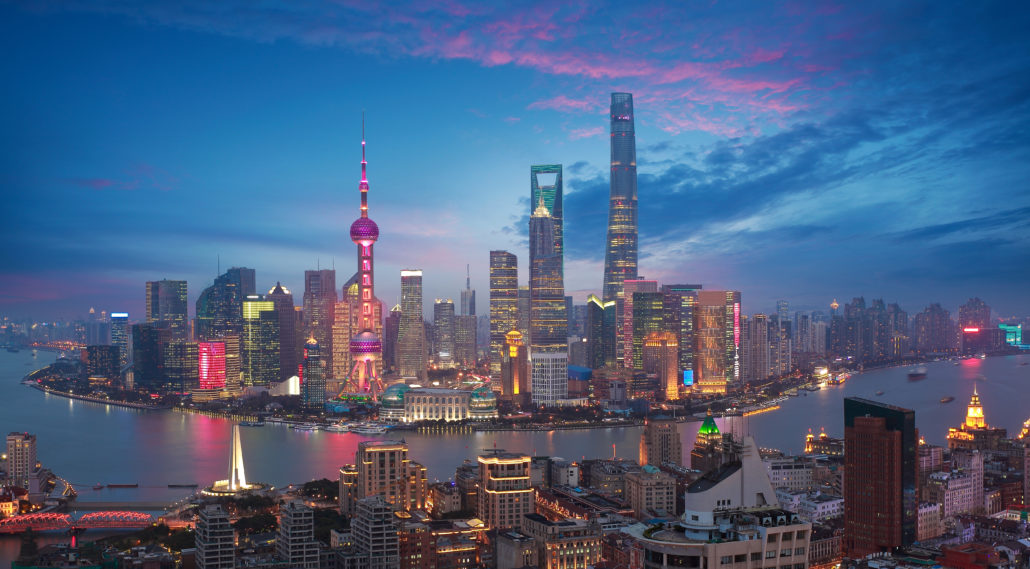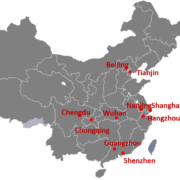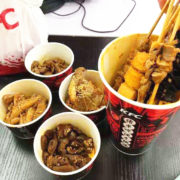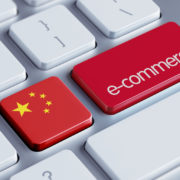The Top Ten Most Promising Cities in China 2019
No.1 Shenzhen

The reform and opening up promoted Shenzhen’s take-off. From 1979, the GDP was only 1/172 of Hong Kong’s small fishing village to 2018, surpassing Hong Kong to become a dynamic first-tier city. Since 2015, the annual population has increased by more than 500,000, ranking first in the country.
Shenzhen has moved from “manufacturing factory” to “hardware silicon valley” and “innovation city”. The new generation of information technology, biomedicine, cultural and creative industries and other strategic emerging industries have become the pillars, accounting for 38% of GDP.
Shenzhen faces problems such as insufficient land resources, industrial migration, urban renewal, and shortage of quality public service resources.
Shenzhen will join hands with cities in the Pearl River Delta to participate in the global division of labour and cooperation to create a global creative and creative capital.
No.2 Beijing

Although Beijing’s urban function positioning does not have the function of an economic centre, the advantage of taking the political centre has become the de facto main economic centre and financial centre. The future capital is separated from Beijing. Beijing is Beijing and the capital is the capital.
Beijing has gradually developed from an industrial city to a service-oriented city. The proportion of the three industries has reached 81%. The financial, headquarters economy and technological innovation have become the three business cards.
Beijing’s urban planning is obviously lagging behind, strictly controlling the population size and raising the cost of living, affecting the vitality of the city; moreover, the economic development around Beijing is obviously backward, which is not conducive to the scale effect caused by interaction with Beijing.
Beijing will be built into a world-class harmonious and livable capital, and as a core engine to lead the coordinated development of Beijing-Tianjin-Hebei.
No.3 Shanghai

Shanghai is the heart of China’s economy. As China’s economy continues to take off, it is expected to rival New York in the future and become a major global economic and financial centre.
Shanghai is dominated by automobile, electronics and finance, with the three accounting for 58% of GDP; the number of A+H listed companies is 367, accounting for about 1/10 of the country.
Shanghai has a similar urban planning lag behind Beijing, strictly controlling the size of the population and thus affecting the vitality of the city. It also faces the problem of insufficient development of the new economy such as the Internet.
Shanghai will continue to open up and build a superior global city, leading to the formation of a world-class city group in the Yangtze River Delta with global competitiveness.
No.4 Guangzhou

The reform and opening-up have released Guangzhou’s new vitality. The GDP rose from the eighth in the country in 1978 to the third in the country in 2015. After that, it was surpassed by Shenzhen. Since 2015, the annual population has increased by more than 400,000, second only to Shenzhen.
With the automotive, electronics and chemical industries as the pillars, the three companies account for 56% of the total industrial output value, and are currently accelerating into the high end of the industry.
Compared with other first-tier cities, Guangzhou has problems of weak innovation ability, backward development of financial industry and high dependence on land finance. The status of the third city is facing challenges.
Guangzhou will join hands with cities in the Pearl River Delta to participate in the global division of labour and cooperation to build a vibrant global city.
No.5 Chengdu

In 2018, Chengdu’s GDP exceeded 1.5 trillion yuan, accounting for 38% of Sichuan’s province. It ranked first in the new first-tier cities.
Chengdu is dominated by electronics and automobiles, which account for 50% of the industrial added value; it has the largest number of financial institutions in the central and western regions.
Chengdu and Chongqing, as the southwestern twins, have extensive competition and cooperation, and the development of the automotive and electronics industries is fierce.
Chengdu will fully utilize the core functions of the national central city and drive the Chengdu-Chongqing urban agglomeration into a sustainable world-class urban agglomeration.
No.6 Nanjing

Due to geographical and historical factors, Nanjing is the link between Jiangsu and Anhui. In 2018, per capita GDP ranked third among the top ten cities, only lower than Shenzhen and Guangzhou, with a new population of 100,000 and accounting for half of Jiangsu Province.
Nanjing is committed to building the “Chip Capital” with its core of electronics, petrochemicals, automobiles and steel.
Due to the strong economic market in the Yangtze River Delta region, Nanjing has limited radiation capacity compared with Hangzhou, Jiangsu and Suzhou, and the recent population agglomeration capacity has been significantly weakened.
In the future, Nanjing will take “Innovative City, Beautiful Ancient Capital” as the vision of urban development, and work together with cities in the Yangtze River Delta to build a world-class city group.
No.7 Wuhan

Wuhan is basically in the geographical centre of China’s main economic zone. In 2018, its per capita GDP reached 135,000 yuan, ranking the forefront of the central region.
From “Steel City” to “Car Capital” and “Optical Valley”, Wuhan currently has complete industrial systems such as steel and deep processing, automobiles, information technology and medicine.
The added value of Wuhan’s private economy is only 43%, which is at the bottom of the top ten cities, and the private economy is not active enough.
Wuhan will stand up the backbone of the Yangtze River economic belt and serve as a strategic fulcrum for the rise of the central region, building a national central city with certain competitiveness and influence on a global scale.
No.8 Chongqing

After Chongqing became the capital of Shanghai, Beijing, Shenzhen and Guangzhou in 2018, the fifth GDP exceeded 2 trillion yuan. The GDP per capita in Xiao Chongqing was 91,000 yuan, slightly lower than that of Chengdu. With the automobile and electronics as the pillars, Chongqing accounts for 42% of the total industrial output value and gradually develops intelligently.
Chongqing faces the problem that the automobile industry is “big but not strong” and the strength of scientific and technological innovation is not strong.
Chongqing will strengthen the role of the comprehensive transportation hub in the southwest region and consolidate the positioning of the economic centre and the national central city in the upper reaches of the Yangtze River.
No.9 Tianjin

Tianjin is the second city in the north after Beijing. The central government once tried to drive Tianjin and even the entire Beijing-Tianjin-Hebei region and the Bohai Rim region with the Binhai New Area, but it did not meet expectations.
From “Tianjin Manufacturing” to “Tianjin Creation”, Tianjin is gradually becoming a national advanced manufacturing R&D base.
Tianjin is dominated by heavy industry, its development is too dependent on investment, and its population is not attractive. The economic growth rate for the second consecutive year is only 3.6%, and its growth is weak.
Tianjin continues to take advantage of international shipping, accelerate the construction of “one base and three districts”, and develop into an international aviation logistics centre and a core area of international shipping in the north.
No.10 Hangzhou

Hangzhou’s economic development momentum is good, and the recent population increase is the third highest in the country, second only to Shenzhen and Guangzhou.
Hangzhou’s private economy accounts for 61% of GDP, and the digital economy represented by information software, e-commerce, and IoT security is leading the country.
Hangzhou faces problems such as partial deviation of industry categories, excessive dependence on land finance, and backward construction of rail transit.
Hangzhou will improve the city’s internationalization level, build a high-energy Bay Area platform, and build an international e-commerce centre.
Resouce: Hengda Research Institution








